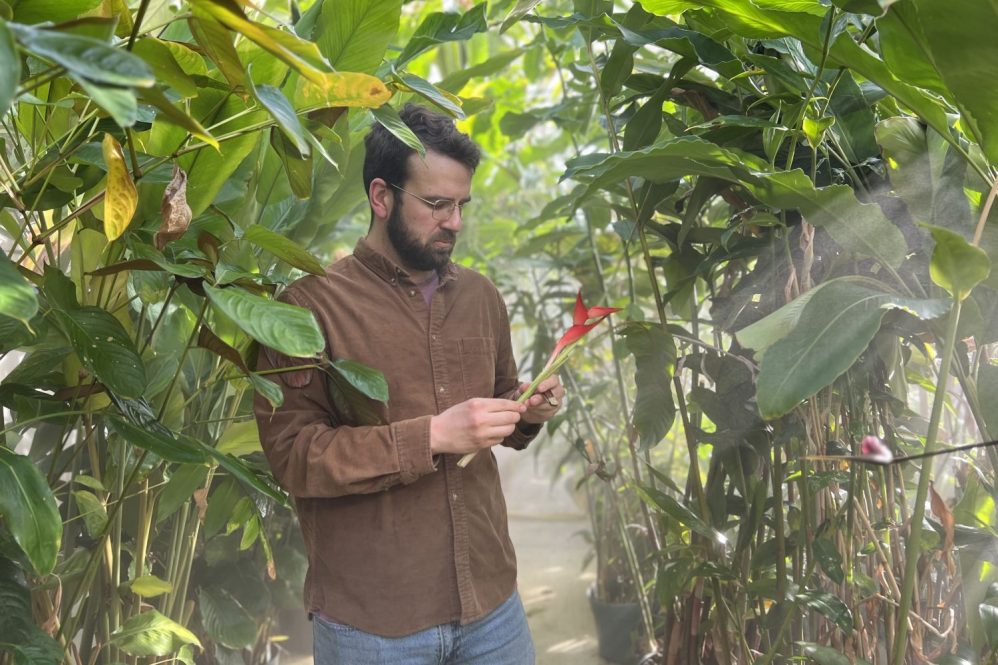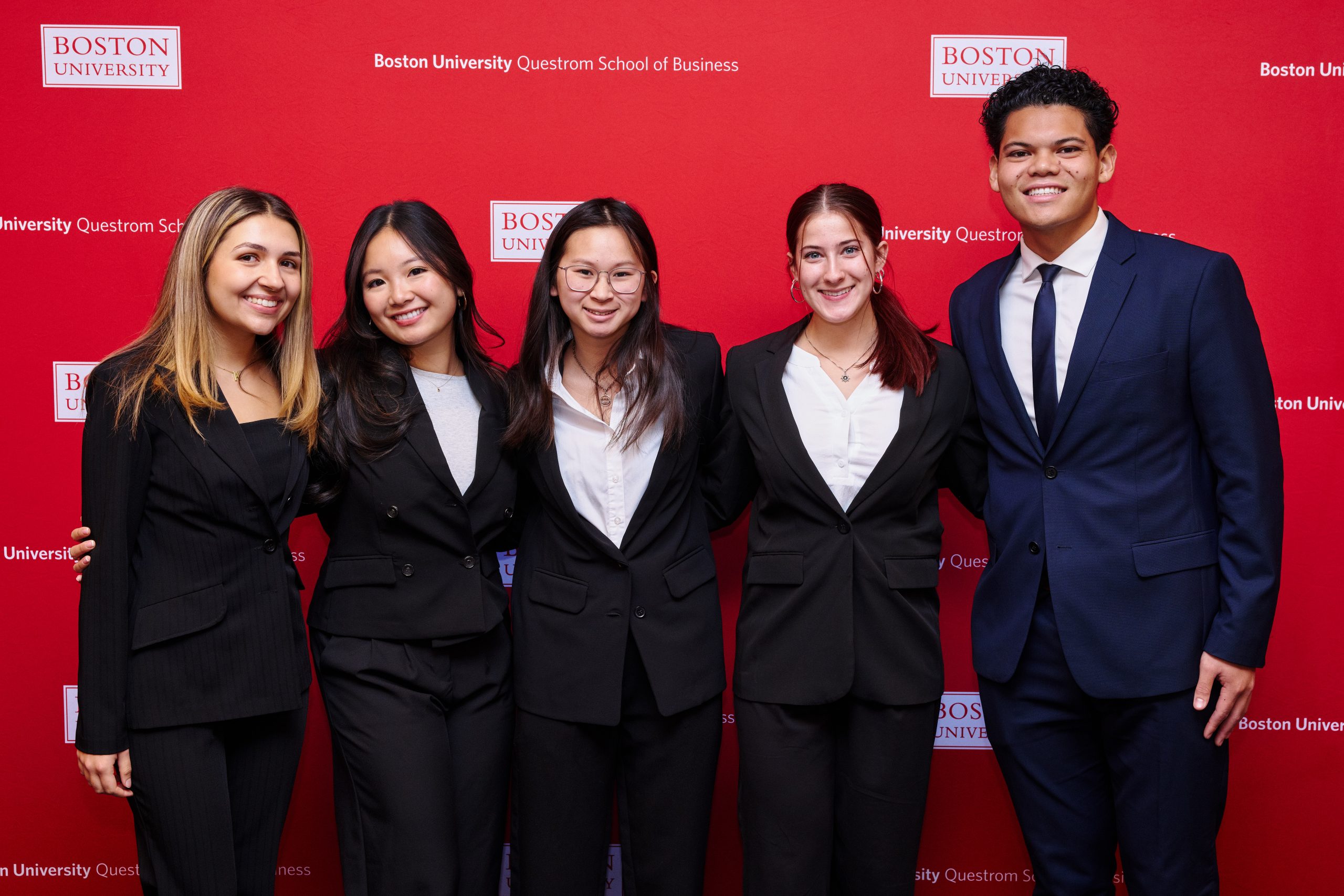Carl Johnson ’19 ’21 (CAHNR) starts his day by making the rounds in the greenhouses he tends, checking for any “plant emergencies” or problems with the facility.
This is standard fare for any horticulturalist. But Johnson is doing it somewhere pretty special. He works at the Smithsonian Institution in Washington, D.C.
Johnson works in an off-site, high-security production complex that supports all the Smithsonian museums.
“I’ve heard it referred to as ‘America’s attic,’” Johnson says. “The stuff on this campus is pretty wild. There’s whale bones and mummies and artifacts.”
Johnson manages a living botanical research collection belonging to the Smithsonian National Museum of Natural History, Department of Botany. This collection supports the work of scientists doing research at the Smithsonian on topics like plant genetics, evolutionary biology, morphology, and species conservation.
“They’ll travel around the world, and they’ll come back with a seed, or a cutting, or a piece of a plant that they want to grow, and it’s my job to take it and grow it here in D.C. in the greenhouse,” Johnson says.
Johnson also works with staff from Smithsonian Gardens who produce interior exhibits and horticultural displays around the Smithsonian museums.
Johnson’s interest in plants and caring for living things started early. He grew up with a small vegetable garden at his house and started caring for plants and pets when he was young.
“I think it’s rewarding to take care of things and see them thrive,” Johnson says. “It’s very fulfilling to take a plant that might be challenging to grow, then figure out what that specific species needs. In the end, I am, hopefully, successfully growing it and seeing it thrive here in the greenhouse.”
Johnson worked at Logees Greenhouses in Danielson for a few years before coming to UConn, where he pursued both his associate and bachelor’s degrees in plant science from the College of Agriculture, Health and Natural Resources.
“I wasn’t the biggest academic person,” Johnson says. “Having the Ratcliffe Hicks associate’s program allowed me to get into UConn and then transition from that to the bachelor’s plant science degree was perfect for me. It brought it all together.”
At UConn, Johnson joined the Horticulture Club. The student club took a trip to Washington, D.C. and met with James Gagliardi ’05 (CAHNR), with whom one of the other members had interned. Gagliardi was working as a horticulturalist at the Smithsonian Institute at the time.
The club members toured the U.S. Botanic Garden with Susan Pell, now the director of the organization, which turned out to be an important moment for Johnson.
“I just found her and her job really inspiring, and I kept thinking about how cool it would be to work in a place like that,” Johnson says.
As Johnson was preparing to graduate, a position at the U.S. Botanic Garden opened. With the help of UConn’s Center for Career Readiness and Life Skills, two weeks after graduation, he started working there.
Johnson worked at the Botanic Garden for a few years before moving over to the Smithsonian in his current role. In that prior role, Johnson was responsible for preparing the gardens each morning for the public, checking on plants and cleaning up anything that may have been left by visitors. He then spent most of his days at the production facility where they grow backups of all the plants on display in case one gets sick or damaged.
“If you think of the plants in the Garden as actors, all the understudies are at the production facility,” Johnson says. “Anything you see on display, there’s three or four extras waiting to take its place.”
While working at the U.S. Botanic Garden, Johnson got to cross off a major botanical bucket list item – growing a “corpse flower.” The corpse flower, or Amorphophallus titanum, gets its nickname from the rotting-flesh-like aroma its flower produces.
“When we have a bloom it’s a big deal,” Johnson says. “It only happens every few years, and the public gets really excited, and people who might not even be interested in plants come to see it.”
Through his years of gardening experience, Johnson says he’s had the chance to grow just about every plant he’d ever dreamed of.
“Getting into plants, I had favorites, plants that I thought were cool, and I had these dream plants that I was hoping to encounter and grow, and I’ve gotten to grow all of them,” Johnson says.
Johnson credits his experience at UConn with preparing him for the work he has done since graduation.
“There’s a lot of basic gardening stuff that comes with this job that I learned at UConn and in my jobs before that people might not think would remain as relevant,” Johnson says. “I still water, I still weed, I still prune. All of those basic gardening skills are still everyday essential things.”
At UConn, Johson interned at the Plant Diagnostic Laboratory, the Home and Garden Center, and in the Floriculture Greenhouse, taking full advantage of having active greenhouses on campus and the services provided to the community through UConn Extension.
“I did every possible internship that was available to someone in plant science,” Johnson says.
Johnson says his internship with Shelley Durocher, laboratory technician in the Floriculture Greenhouse, especially prepared him for the work he does now at the Smithsonian.
“That’s what [Durocher] does – she works with the researchers, and she grows their plants to whatever their specifications are and for whatever research purpose they have in mind,” Johnson says. “So that was a one-to-one translation. It was a super valuable experience.”
This work relates to CAHNR’s Strategic Vision area focused on Ensuring a Vibrant and Sustainable Agricultural Industry and Food Supply.
Follow UConn CAHNR on social media



